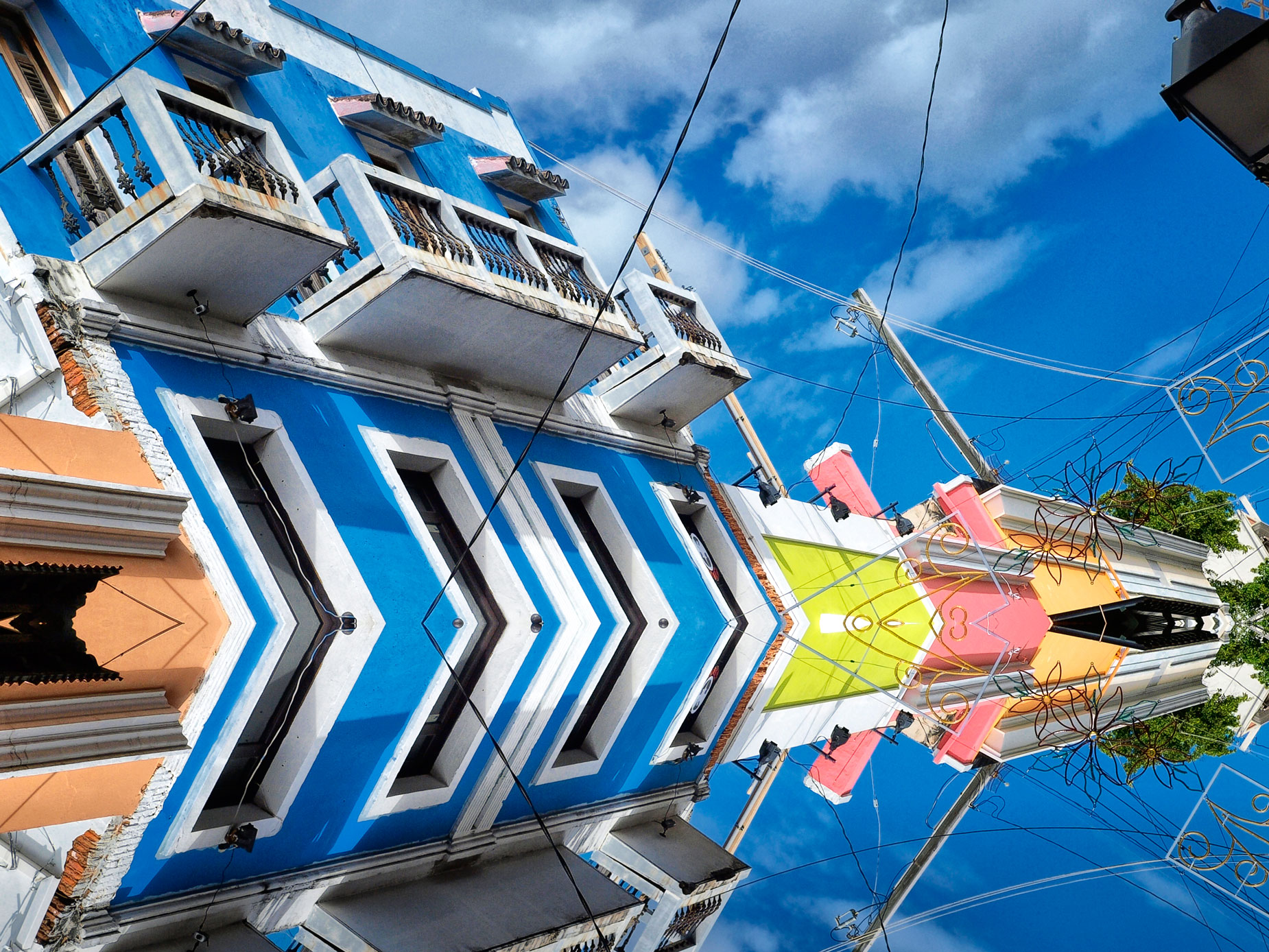Today’s Post by Joe Farace
We’re going to Puerto Rico, where we’re gonna close. And we’re so excited, we can’t see straight.—Chita Rivera
Back in the film days, when I was attending the Maryland Institute, College of Art in Baltimore, I created a series of Escher-like “upside-down” images that were made by first shooting a photograph of urban architecture, then turning the camera upside-down and shooting the identical scene using a double-exposure techniques to create an optical illusion. This was tricky to accomplish with a 35mm film SLR because in those days cameras were were designed to prevent accidental double-exposure. But the project was fun to do for me and the results were totally unpredictable.

 Flash forward to watching how the opening title sequence of Amazon’s Bosch TV series uses a similar technique, although I doubt the cinematographer turned the camera upside down. Instead the production company probably used digital techniques to produce those effects.
Flash forward to watching how the opening title sequence of Amazon’s Bosch TV series uses a similar technique, although I doubt the cinematographer turned the camera upside down. Instead the production company probably used digital techniques to produce those effects.
I thought it might be fun to revisit my old technique, this time using the clever Photoshop-compatible plug-in called Flood that’s available for download from Flaming Pear Software with some of the images I shot in Old San Juan, Puerto Rico. The camera used was an Olympus E-3 Four-Thirds (not Micro Four-thirds) camera with a 12-60mm f/2.8-4.0 lens at 42mm. Exposure was 1/1000 sec at f.9 and ISO 200.
The Flood plug-in can be used to create all kind of realistic water effects too, as you can see in an example of a photograph of my old Jaguar XJ-S (I miss it’s style but not its problems) on my car photography website. As I mention in that post, the simplest approach to creating water effects is to click on the “dice” icon to produce a random combination of effects. Keep clicking until you find a look you like and then use the sliders to tweak the effect. You can also skip the dice and use the sliders to create the effect shown above. Tip: If you slide all of the water effects to zero, you can get the kind of smooth, flat reflections seen above. The dice works faster than using the sliders but why not try it both ways.
If you liked this post and enjoy visiting this blog, you can show your appreciation by buying me a cup of Earl Grey tea ($2.50) by clicking here or you can just click on Contact and offer a simple “thank you.”